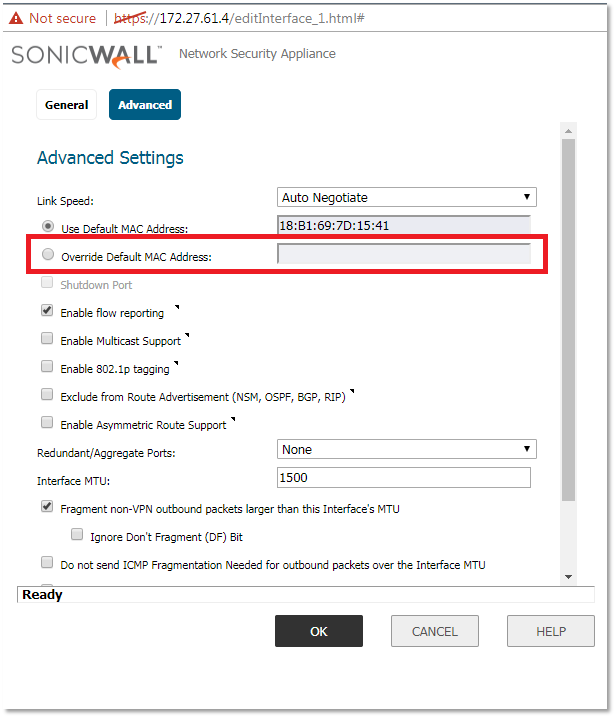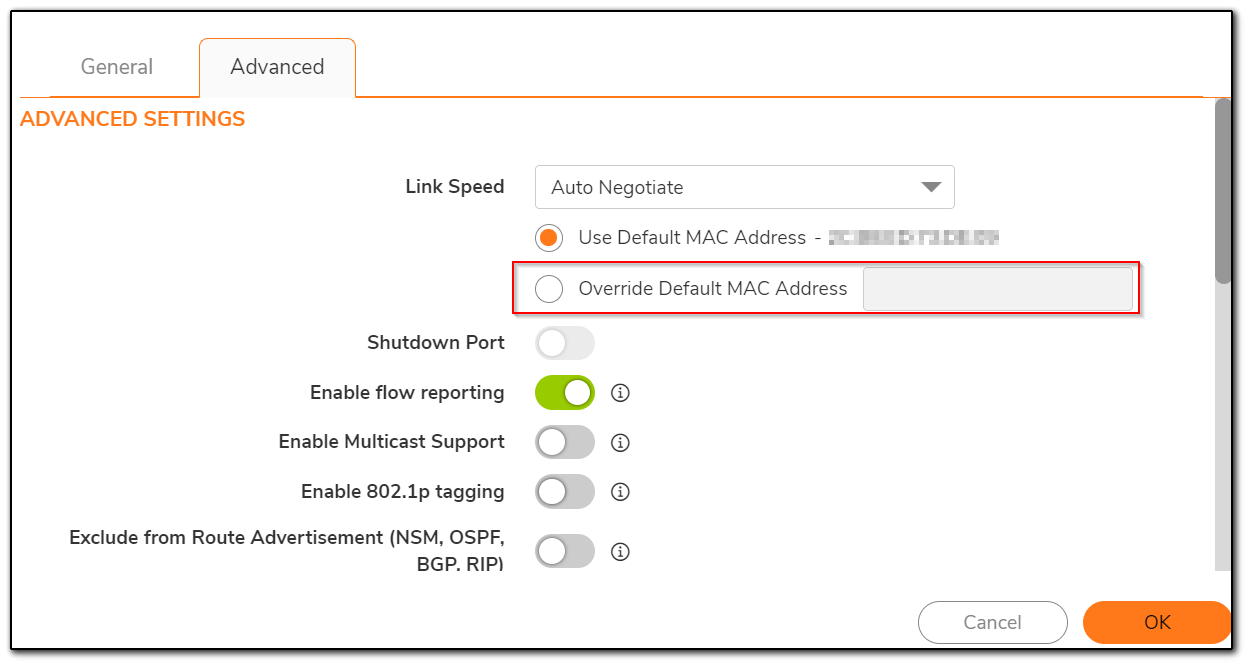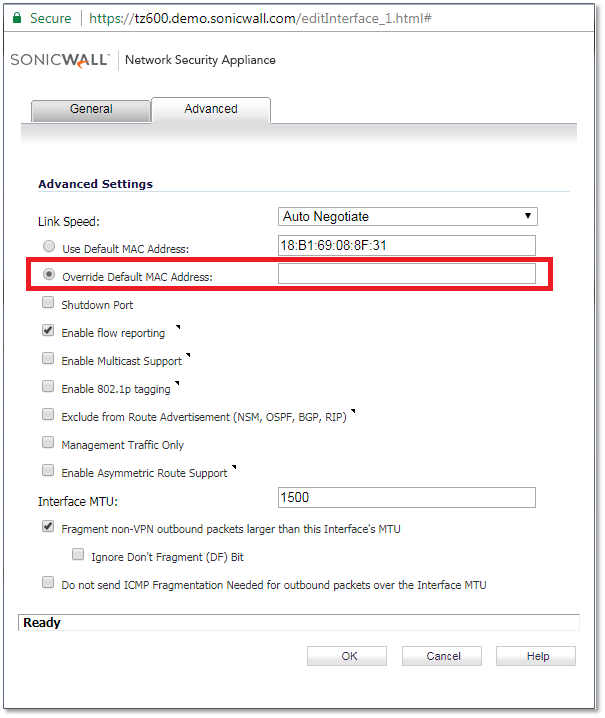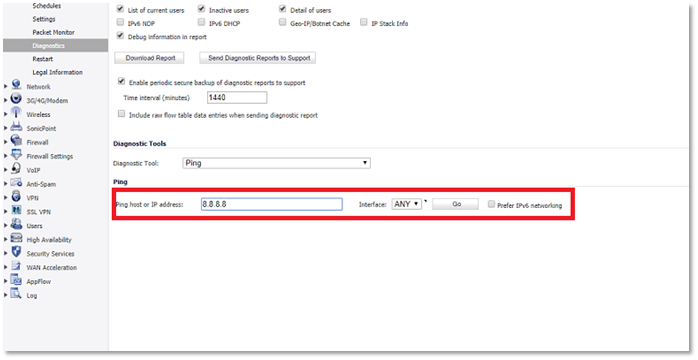Issues with Connectivity to a Cable Modem
Description
Issues with Connectivity to a Cable Modem
Resolution for SonicOS 7.X
This release includes significant user interface changes and many new features that are different from the SonicOS 6.5 and earlier firmware. The below resolution is for customers using SonicOS 7.X firmware.
Issues with Connectivity to a Cable Modem
This is only if you’re having issues with the SonicWall acquiring an IP or connectivity when using a cable ISP.
If your ISP is setup for DHCP, plug a computer into the cable modem and pull DHCP. Do an Ipconfig on the laptop and record all the information the laptop pulled. Then unplug the modem, including the coaxial cable and let it sit there for 15 – 30 minutes. While the modem is unplugged configure the SonicWall as a static IP with the information pulled from the laptop. Then once this is done unplug the SonicWall.
Plug the cable modem in, power 1st then coaxial. Once the device is 100% up connect the SonicWall to the modem and turn on. Test connectivity. If you have connectivity, go ahead and change the WAN as DHCP.
If your ISP is setup for static, unplug the cable modem, coaxial and power for 30 minutes (this is to ensure the ARP cache at the cable company’s end is flushed). While this device is down, configure the SonicWall’s WAN IP according to the ISP’s information they provided to you. Once the SonicWall is configured unplug the SonicWall. Once ½ hour has passed plug the cable modem in, power 1st then coaxial. Once the device is 100% up connect the SonicWall to the modem and turn on. Test connectivity.
Lastly you can copy MAC address of the laptop and spoof it on the WAN port.
On Standard you would do this by going to Network | System | Interfaces . Open the edit screen for the WAN interface and go to the advanced tab. You can mention that on the Override MAC address field.


 NOTE: When testing connectivity from the Sonicwall go to Device | Diagnostics |Ping pull down to ping. Ping an IP outside the network and ping google.com this will test DNS versus connectivity issues.
NOTE: When testing connectivity from the Sonicwall go to Device | Diagnostics |Ping pull down to ping. Ping an IP outside the network and ping google.com this will test DNS versus connectivity issues.

Resolution for SonicOS 6.5
This release includes significant user interface changes and many new features that are different from the SonicOS 6.2 and earlier firmware. The below resolution is for customers using SonicOS 6.5 firmware.
Issues with Connectivity to a Cable Modem
This is only if you’re having issues with the SonicWall acquiring an IP or connectivity when using a cable ISP.
If your ISP is setup for DHCP, plug a computer into the cable modem and pull DHCP. Do an Ipconfig on the laptop and record all the information the laptop pulled. Then unplug the modem, including the coaxial cable and let it sit there for 15 – 30 minutes. While the modem is unplugged configure the SonicWall as a static IP with the information pulled from the laptop. Then once this is done unplug the SonicWall.
Plug the cable modem in, power 1st then coaxial. Once the device is 100% up connect the SonicWall to the modem and turn on. Test connectivity. If you have connectivity, go ahead and change the WAN as DHCP.
If your ISP is setup for static, unplug the cable modem, coaxial and power for 30 minutes (this is to ensure the ARP cache at the cable company’s end is flushed). While this device is down, configure the SonicWall’s WAN IP according to the ISP’s information they provided to you. Once the SonicWall is configured unplug the SonicWall. Once ½ hour has passed plug the cable modem in, power 1st then coaxial. Once the device is 100% up connect the SonicWall to the modem and turn on. Test connectivity.
Lastly you can copy MAC address of the laptop and spoof it on the WAN port.
On Standard you would do this by going to Manage | Network | Settings. Open the edit screen for the WAN interface and go to the advanced tab. You can mention that on the Override MAC address field.

 NOTE: When testing connectivity from the Sonicwall go to Investigate | System Diagnostics | Diagnostic Tools pull down to ping. Ping an IP outside the network and ping google.com this will test DNS versus connectivity issues.
NOTE: When testing connectivity from the Sonicwall go to Investigate | System Diagnostics | Diagnostic Tools pull down to ping. Ping an IP outside the network and ping google.com this will test DNS versus connectivity issues.

Resolution for SonicOS 6.2 and Below
The below resolution is for customers using SonicOS 6.2 and earlier firmware. For firewalls that are generation 6 and newer we suggest to upgrade to the latest general release of SonicOS 6.5 firmware.
Issues with Connectivity to a Cable Modem
This is only if you’re having issues with the SonicWall acquiring an IP or connectivity when using a cable ISP.
If your ISP is setup for DHCP, plug a computer into the cable modem and pull DHCP. Do an Ipconfig on the laptop and record all the information the laptop pulled. Then unplug the modem, including the coaxial cable and let it sit there for 15 – 30 minutes. While the modem is unplugged configure the SonicWall as a static IP with the information pulled from the laptop. Then once this is done unplug the SonicWall.
Plug the cable modem in, power 1st then coaxial. Once the device is 100% up connect the SonicWall to the modem and turn on. Test connectivity. If you have connectivity, go ahead and change the WAN as DHCP.
If your ISP is setup for static, unplug the cable modem, coaxial and power for 30 minutes (this is to ensure the ARP cache at the cable company’s end is flushed). While this device is down, configure the SonicWall’s WAN IP according to the ISP’s information they provided to you. Once the SonicWall is configured unplug the SonicWall. Once ½ hour has passed plug the cable modem in, power 1st then coaxial. Once the device is 100% up connect the SonicWall to the modem and turn on. Test connectivity.
Lastly you can copy MAC address of the laptop and spoof it on the WAN port.
On the management interface, you would do this by going to Network | Interfaces . Open the edit screen for the WAN interface and go to the advanced tab. You can mention that on the Override MAC address field.

 NOTE: When testing connectivity from the Sonicwall go to System | Diagnostics | Diagnostic Tools pull down to ping. Ping an IP outside the network and ping google.com this will test DNS versus connectivity issues.
NOTE: When testing connectivity from the Sonicwall go to System | Diagnostics | Diagnostic Tools pull down to ping. Ping an IP outside the network and ping google.com this will test DNS versus connectivity issues.
